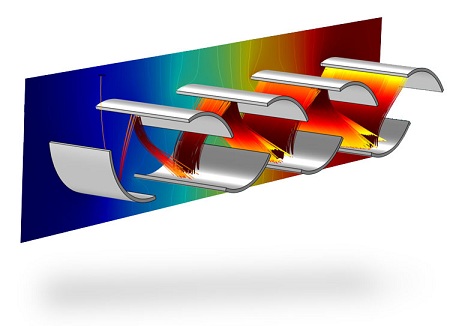
There are many exciting new features in the Particle Tracing Module for COMSOL Multiphysics version 4.3. The secondary particle emission feature is particularly fascinating. “This new option for the Wall Condition allows you to model filter multipliers and multipactors, which were previously very difficult to model”, says Dan Smith, Development Team Leader at COMSOL. A mathematical expression, like a logical expression containing the particle energy for instance, can be used to determine the number of secondary particles to be released. Secondary particle emission is a feature that would be of interest to those who work in the electronics industry, mainly in the area of RF and electrical components.

Another cool addition to the Particle Tracing Module is the Brownian Force, used in fluid flow applications such as microfluidics and biomedical applications. For example, thanks to the Brownian Force feature, it is now possible to model lab-on-a-chip (LOC) devices, which are small chip-size microfluidic devices that handle incredibly small amounts of fluid – at values lower than pico liters! Simulating these is possible because you can now model diffusion of very small particles suspended in a fluid, and not just model the motion.
With the new sticking probabilities, users are able to model separation devices such as “particle separation via membrane”. The sticking probabilities are available as boundary conditions, and when making contact with the wall, particles can stick, freeze, or disappear on the wall as per a probability or an arbitrary expression.
Go to the 4.3 Release Highlights page for details on these and other new features in the Particle Tracing Module.




Comments (3)
Kaan Demirel
June 15, 2012Hi,
is it possible to make a model that obeys Fowler-Nordheim theory for field emitters?
Thx.
kherbouche fouad
December 16, 2013hi , i nedd help in the module of particle trajectory in the Auxiliary Dependent Variable so i want to know we use this in the simulation .thx
Dr. Yahya
July 2, 2018Hi Funny,
I’m trying to modify the Ion Range Benchmark model that is simulates the passage of energetic protons through silicon with both ionization losses and nuclear scattering but I would like the domain to be Air – Aluminum ( various thickness) and the outcome is the deferential flux of the protons-aluminum interaction #/cm2.MeV.
Can you give me some recommendations how to start and what is required if it possible to simulate with COMSOL.
Thank you much